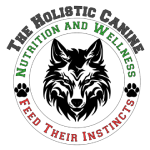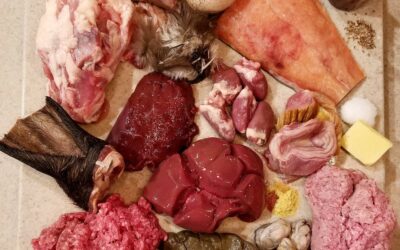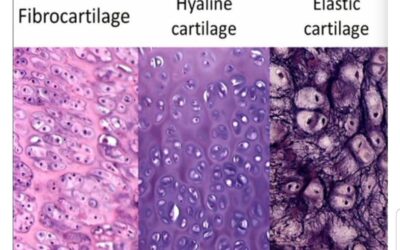In my practice, I teach and promote what I have coined the highest nutrient per bite ratio or HN/Br. This is taught and promoted to my human clients as well as to pet parents who are learning to feed a biologically appropriate diet to their dog. This principle ensures nutrient needs are being met in each and every bite. Dogs, like us, have very real and specific nutrient requirements, but not every dog has the same needs. Many factors define and determine which nutrients are needed in which amounts. Unfortunately, this is not so cut and dry. Further, there has to be a starting point upon which we build and hone nutrient requirements for each dog. Thanks to canine nutritional research furthered in the 1970s and 1980s and later improved upon in the early 2000s, we have standards that can guide pet parents to safeguard pets against nutrient-deficient pathologies.
Pet parents caring for the modern dog have the National Research Council (NRC) to thank. The NRC complied and condensed animal nutrition research from the mid-1970s through the 1980s. These more detailed findings enabled them to create separate nutrient recommendations for the maintenance of healthy adult dogs, for puppies, and for pregnant and lactating dams, something that was lacking in the earlier publications from 1974. Despite the vast improvement in nutritional recommendations for various life cycles, the newer recommendations also came with a disclaimer. The NRC made clear that “caution is advised in the use of these requirements without demonstration of nutrient availability, because in some cases requirements have been established on the basis of studies in which nutrients were supplied in highly purified ingredients where digestibility and availability are not compromised.” This made it nearly impossible for dog food manufacturers to set nutrient standards in their processed foods as their ingredients were clearly not in a “highly purified” form guaranteeing nutrient “digestibility and availability,” and as a result, the industry and its regulators declared that the NRC recommendations were not suitable for standardizing pet foods. Clearly the NRC was in need of yet another updated publication. This moved AAFCO to organize the “Canine Nutrition Expert and the Feline Nutrition Expert subcommittee.” The committee was established to interpret and transform NRC recommendations into a set of guidelines for pet food manufacturers to follow. These standards are still being used by the pet food industry to-date despite the fact that the NRC did publish an updated and lengthy report in 2006. And yet, the newer report is still limited in many ways.
In a Cambridge University Press article entitled Challenges in Developing Nutrient Guidelines for Companion Animals, we learn, “The [NRC] recommendations give minimum and maximum amounts or concentrations for each nutrient to facilitate formulating complete and balanced diets for healthy animals. The committee resisted extending the scope beyond the maintenance of health and prevention of disease, and did not address nutrient requirements for animals with disease. Theoretically, any diet formulated to contain more than a minimum and less than a maximum amount or concentration of each nutrient provided in the tables should be complete and balanced for healthy animals. However, making pet food is a complex process, and animals are not uniform. Thus, there are many factors that can affect nutrient requirements, and it is important to recognize the limitations of these NRC recommendations.” The report further states, “For many nutrients, a MR [minimum requirement] cannot be established because gradually increasing amounts of nutrient have not been fed to dogs and cats while measuring performance. As a result, the tables, especially those for adult maintenance, have many blank values for MR. However, where an MR has not been established, a pet food has often been fed to dogs and cats without resulting in signs of deficiency. This allows an adequate intake (AI) to be established, defined as a concentration or amount of a nutrient that had been demonstrated to support a defined physiological state. Because the AI is established using pet food ingredients, a safety factor is not included when an RA [recommended allowance] is established based on an AI. Thus, it is possible that a diet containing lower concentrations than an RA established from an MR but made from bioavailable ingredients, or a diet containing lower concentrations than an RA established using an AI, may still support a given physiological state. These important possibilities are sometimes not appreciated by the public or regulators1.” This notation is important for the raw feeding pet parents to bear in mind.
We see there are several limitations with using and following the NRCs nutrient recommendations, not to mention the rather steep price tag to purchase the publication and somewhat obscure and difficult content. The latter is greatly unfortunate because it reduces any possibility of getting the publication into the hands of the general pet parent community, especially to those in the homemade dog food and raw feeding circles, the very people with the most to gain from its content. The Challenges article further points out, however, that the publication contains “many gaps in the tables listing MR, because there has been little research performed during the last 20 years…Most requirements have been established using growth rate as the criterion of adequacy, and there remains little information on the MR for maintenance and reproduction or any other physiological state. There is also comparatively little information on bioavailability; consequently, safety factors are in many instances an educated estimate. As a result, some RA may be higher than needed, e.g. Cu [copper] or Zn [zinc]1.” But despite the limitations, we nevertheless have a guideline by which to refer.
We have learned from the Challenges article that the NRC has resisted extending the scope of nutrient requirements beyond the maintenance of health and the prevention of disease. In other words, we are looking at minimum requirements that will prevent deficiency-pathologies, not requirements to cultivate optimal health; most notably in dogs with predispositions to conditions and disease states, dogs with existing conditions, and seniors with higher nutrient needs. What is also greatly lacking is a safe upper limit for all vital nutrients that are being sourced from highly bioavailable ingredients such as raw foods. And if this is not enough, the article also notated the possibility that bioavailable ingredients may actually have lower requirements due to being in their natural organic state surrounded by cofactors, enzymes, and associating nutrients. So what we are left with is a hodge-podge of possibilities and what-ifs. In all honestly, science is still light years behind when it comes to biological systems and their intricate and intimate connection with nutrients and environment.
Using AAFCOs and some of the NRCs guidelines and standards, the dog food industry has thus far managed to prevent the extermination of pets consuming their products, so we know that even when being fed highly adulterated, rendered, synthetic, highly processed, biologically inappropriate foods, dogs are surviving, some even well into their golden years. We can conclude that something is moving in the correct direction. But, we also know that the modern dog is stricken with chronic and debilitating disease conditions and many more are facing high mortality rates. We can also conclude, then, that something is moving in the wrong direction. For all practical purposes, we can suffice it to say that the nutrient minimums are working in the favor of pets consuming commercial foods while the highly processed, low bioavailable, low quality ingredients, and excessive processing is not. This is not to say that raw fed dogs are immune from conditions and chronic disease because, quickly frankly, many raw fed dogs are suffering with conditions and dying from cancer, albeit the risk and rate is much lower than in dogs on a lifetime of processed dog food.
When we are considering nutrient requirements and quantities in dogs, it should be the goal of the raw feeding pet parent to cultivate optimal health, and where dogs are suffering with any number of conditions, to cultivate healing as well. For the healthy dog, taking into account those influencing factors that might affect health adversely in the future ought to be a priority when designing a better-than-satisfactory nutrition plan. In all of the situations where dogs have needs that go beyond NRCs “standard adult,” “standard puppy,” and “standard pregnant and lactating dam” requirements, it is vital to take into consideration the current state of health, all possible genetic hurdles, impeding and relating factors, lifestyle and environmental factors, and breed predispositions affecting, whether directly or indirectly, each individual dog and thereby increase (or decrease) the necessary nutrient baselines where needed. Because of these complex and highly varying considerations, the NRC would have quite the undertaking to work out the nutrient requirements for the most common scenarios and conditions in dogs. Since this is highly unlikely to be produced anytime in the near future or at all, it would be a great value to pet parents for the NRC to discover safe upper limits for all the essential nutrients (rather than the few they have determined) in order that nutrient adjustments can be safely made by pet parents where needed. Increasing the nutrient baselines for those that are known to be advantageous in common health crises would be immensely beneficial, especially the needs of cancer victims where therapeutic nutrient dosing needs to be quite high.
It is necessary to here point out that while diet plays a vital and fundamental role in health, it is but one factor in many that play major roles in the maintenance of health and the prevention of disease conditions and premature death. Health is in the cells. Cellular health and epigenetic gene expression are influenced primarily by diet and environment which directly affect internal and external influencing factors that can lead to or prevent disease. These dietary and environmental influences determine how blueprints within the DNA are read and then expressed (turned on) or stored (turned off). Thus, disease potential within a cell is turned on or off based on these outside influencing factors. Despite a dog being offered a lifetime of raw meals consisting of what is thought to be the most nutrient-dense, perfectly sourced ingredients, he or she can still end up with a chronic condition or fatal disease. This often happens when environmental interaction coupled with external and internal influences are ignored. These influences are pivotal and play a major role in a gene expressing (turning on) a predisposed potential for disease. This world is far from safe for us and our animals. But having a working knowledge of what can lead to disease gives us a head-start in its prevention. Taking critical steps to prevent disease in our dogs goes a long way in greatly reducing the chances of suffering and disease fatality. With this knowledge, we can use nutrients through a raw diet as an arsenal to affect life-saving gene expression while removing environmental factors and being cognizant of internal risk factors.
Chronic Disease Influencing Risk Factors
- Breed disease-predispositions
- Genetic/pedigree disease potential
- Vaccinations (even one can be lethal, but here I refer to unnecessary repeat vaccines)
- Early spay and neuter
- Chemical exposure:
- Flea/tick/heartworm/worming chemicals
- Cigarette/cigar smoke
- Air fresheners
- Hair and body aerosols
- Lawn and garden chemicals, weed killers (esp. glyphosate), pest control
- Pool/hot tub chemicals
- Farm and garden chemicals (pesticides, insecticides, fungicides, etc.)
- Household pesticides, insecticides, fungicides, rodent poisons, ant baits, etc.
- Acetone exposure
- Nail product and paint fumes
- Carpet and floor cleaners
- Construction and automobile chemicals and oils
- Fabric softener
- Cleaning solutions
- Drugs, veterinary prescriptions
- Growth hormones
- Processed food diet, kibble
- Excessive consumption of a single recipe/diet (homemade and commercial)
- Excessive consumption of same-source ingredients (homemade and commercial)
- Unbalanced/unvaried diet
- Excessive supplementation
- High carbohydrates/fiber diet (commercial and homemade)
- Species inappropriate diet (commercial and homemade)
- Consumption of rancid fats and fish oils
- Nutrient deficient meals
- Nutrient toxic meals and supplementation
- Tap water (chlorine, fluoride, pharmaceutical contaminants, heavy metals, pesticides, etc.)
- Poor dental and gum health
- Parasite induced disease condition
- Stress/anxiety/loneliness
- Lengthy crating and confinement
- Obesity
- Lack of outdoor time
- Lack of sunlight
- Lack of fresh air
- Lack of exercise
- Lack of purpose (esp. in working breeds)
- Tight fitting collar
- Excessive heat or cold exposure
- Excessive breeding of bitch
I would like to here end Part III. Part IV will discuss my highest nutrient per bite ratio (HN/Br) diet plan.
©2019 Kimberly Lloyd, PhD, BCHHP, Cert Raw Food Nutritionist
1 RF Butterwick, JW Erdman Jr, RC Hill, AJ Lewis and CT Whittemore, “Challenges in Developing Nutrient Guidelines for Companion Animals,” British Journal of Nutrition, no. 106, Oct 12, 2011, S24-S31. (Italics and underline mine)



